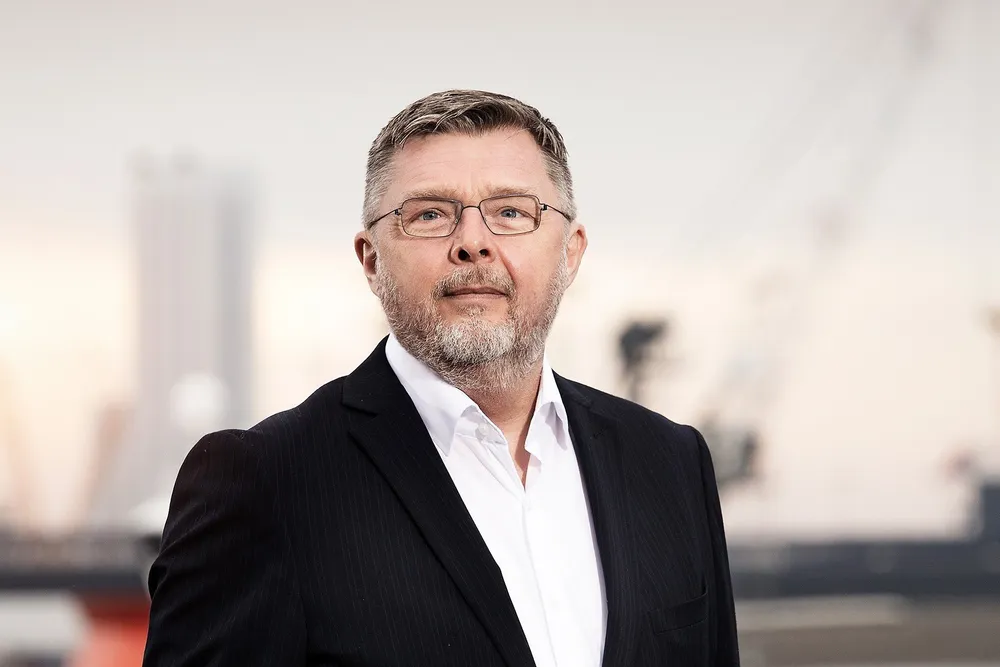'Turbine makers must learn lesson of failed Airbus superjumbo,' warns key wind port chief
Demand for supersized Airbus jet dried up partly because few airports could accommodate it – wind turbine suppliers are running headfirst into a similar problem, warns port chief

The offshore wind industry must learn from the cautionary tale of the Airbus A380, an iconic superjumbo that was ultimately forced out of production, says the chief commercial officer of world-leading Danish supply chain terminal Port Esbjerg.
Looking out over the North Sea, Port Esbjerg was founded in 1874 after Denmark lost another port in what is now modern-day Germany in the second Danish-Prussian War. In the 150 years since then, Port Esbjerg has transformed from principally serving the fishing industry to becoming a leading global hub for the export of wind turbines.
Port Esbjerg has in particular become a pacesetter in serving the offshore wind industry as the sector has grown since the turn of the century. In fact, Port Esbjerg claims that more than 80% of Europe’s current installed offshore wind capacity has been shipped out of its docks.
Bank recalls how the world’s first offshore wind farm, Denmark’s Horns Rev, was supplied from there before its inauguration in 2003.
“Back in those days, we did not see offshore wind being big,” he said. “Even the industry itself didn't know where this was going.” It’s only in the last decade that he said it became clear offshore wind would develop into a fully-fledged industry.
Global it may be, but Bank stresses that it is still a young, immature industry at little over 20 years old. There is still a “race for the winning technology,” he said. “We don't know where this will end yet.”
He compared this to the “very mature” onshore market. The nacelle for a typical onshore wind turbine has the dimension of a 40-feet container. “Everything is standardised. It can go with any vessel. It can go by any truck.”
It is so mature and standardised, that Port Esbjerg does not even count the number of onshore wind components that pass through the port anymore. “This is just a commodity in and out of the port.”
Until around a decade ago, Port Esbjerg could also handle offshore wind turbines using its existing cranes, roads and infrastructure.
But more recently, as turbine power ratings have jumped from 8MW, to 10MW and now to 15MW, “there was a shift,” said Bank.
Existing infrastructure no longer cuts it. “You had to rebuild or build new.” This is not something that can be done in small increments, said Bank. “These are huge steps that even for us as a port, this is major investments because you need so much area. You need so much water depth.”
Despite the seemingly break-neck scaling up of turbine capacity, what is being done is “actually not very innovative,” said Bank. “We have just built bigger. More iron, more fibre, more everything.”
“I could compare it with a similar case,” he said. “The Airbus A380.”
This was a double-decker superjumbo passenger jet that the aerospace company was ultimately forced to discontinue in 2021 after airlines such as Etihad ultimately decided they preferred smaller aircraft.
The technology and efficiency of the aircraft was “tremendous,” said Bank. “It was a huge new thing. But as a concept, it didn't work because not many airports are built for double-deckers.”
What was true for the A380 and airports will also become true for turbines and ports, he warned.
New supersized models are now “hitting boundaries” where components can’t be transported by road anymore. “If you keep sizing up, you will have bigger and bigger vessels, but the vessels will become so big that you cannot go to a port.”
These challenges call for innovative thinking, he said. A 150-metre blade might be split in two – a 100-metre piece and a 50-metre piece, he said. “Then suddenly, we are not sizing up, we are actually sizing down.”
Another potential solution, which Bank said the Esbjerg team has observed in the US and China during global fact-finding missions, is using barges or flatbed vessels that go “back and forth” transporting supersized components from the port to an installation ship waiting out at sea.
“That will decrease the demand on the port capacity,” he said. “I'm sure we will see this being introduced in Europe.”
“We will learn to do things differently – not just build bigger. Things will change.”
(Copyright)